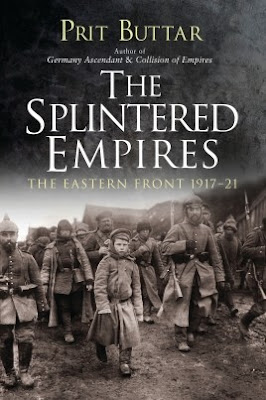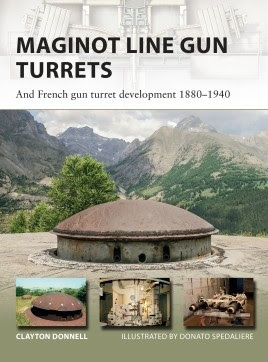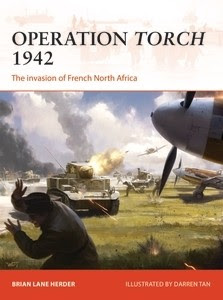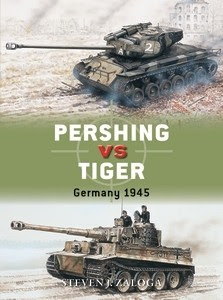Osprey: Titles Available From August 2017
The Splintered Empires
At the beginning of 1917, the three empires fighting on the Eastern Front were reaching their breaking points, but none was closer than Russia. After the February Revolution, Russia's ability to wage war faltered and her last desperate gamble, the Kerensky Offensive, saw the final collapse of her army. This helped trigger the Bolshevik Revolution and a crippling peace, but the Central Powers had no opportunity to exploit their gains and, a year later, both the German and Austro-Hungarian empires surrendered and disintegrated.
Concluding his acclaimed series on the Eastern Front in World War I, Prit Buttar comprehensively details not only these climactic events, but also the ‘successor wars' that raged long after the armistice of 1918. New states rose from the ashes of empire and war raged as German forces sought to keep them under the aegis of the Fatherland. These unresolved tensions between the former Great Powers and the new states would ultimately lead to the rise of Hitler and a new, terrible world war only two decades later.
The Sea Devil
In 1916, a three-masted windjammer bearing Norwegian colours sailed out of a quiet anchorage in Germany, loaded with cargo and apparently bound for Australia. Her true mission was quite different.
The ship was, in fact, the SMS Seeadler, commanded by swashbuckling German aristocrat Felix von Luckner. Over an epic voyage, he used cunning and deception to destroy fourteen merchant ships, all the while evading the utterly foxed and infuriated British Admiralty in a daring game of cat and mouse.
This rip-roaring World War I story depicts a life of espionage, counterespionage and piracy of the most gentlemanly kind.
MiG-21 Aces of the Vietnam War
Having learned their trade on the subsonic MiG-17, pilots of the Vietnamese People's Air Force (VPAF) received their first examples of the legendary MiG-21 supersonic fighter in 1966. Soon thrown into combat over North Vietnam, the guided-missile equipped MiG-21 proved a deadly opponent for the US Air Force, US Navy and US Marine Corps crews striking at targets deep in communist territory.
Although the communist pilots initially struggled to come to terms with the fighter's air-search radar and weapons systems, the ceaseless cycle of combat operations quickly honed their skills. Indeed, by the time the last US aircraft (a B-52) was claimed by the VPAF on 28 December 1972, no fewer than 13 pilots had become aces flying the MiG-21. Fully illustrated with wartime photographs and detailed colour artwork plates, and including enthralling combat reports, this book examines the many variants of the MiG-21 that fought in the conflict, the schemes they wore and the pilots that flew them.
Maginot Line Gun Turrets
The Maginot Line was one of the most advanced networks of fortifications in history. Built in the aftermath of World War I, and stretching along the French eastern border from Belgium to Switzerland, it was designed to prevent German troops from ever setting foot on French soil again.
Its primary defensive weapons were the gun turrets. Beginning development in the 1870s and improving on German designs, they were constructed out of steel wedges and could revolve and disappear from sight after firing, making them impervious to enemy bombardment. They were deadly accurate and created havoc on the German units that attacked the line during their invasion of France in 1940.
This fully illustrated study will examine the technical details of the French artillery turrets. It will show the evolution of the design of the guns and turrets used in the French forts before and during World War I, than those built exclusively for the Maginot Line to give a comprehensive overview of the weapons designed to protect France from invasion.
Operation Torch 1942
Following the raid on Pearl Harbor and the entry of the United States into World War II, President Franklin D. Roosevelt identified the European theatre as his country's priority. Their first joint operation with the British was an amphibious invasion of French North Africa, designed to relieve pressure on their new Soviet allies, eliminate the threat of the French navy joining the Germans, and to shore up the vulnerability of British imperial possessions and trade routes through the Mediterranean.
Operation Torch was the largest and most complex amphibious invasion of its time. In November 1942, three landings took place simultaneously across the French North African coast in an ambitious attempt to trap and annihilate the Axis' North African armies between the invading forces under General Eisenhower and British Field-Marshall Montgomery's Eighth Army in Egypt. Using full colour artwork, maps and contemporary photographs, this is the thrilling story of this complex operation.
Sea Harrier FRS 1 vs Mirage III/Dagger
Following Argentina's military operation to take possession of the Falkland Islands/Islas Malvinas, British Prime Minister Margaret Thatcher's government launched a major naval operation to return them to British rule. Defending the Royal Navy task force were two small squadrons totalling 20 Sea Harriers (SHARs). Initial clashes between SHARs and Argentine Mirages and Daggers on 1 May 1982 failed to eliminate the Sea Harrier defenders. FAA fighter-bomber pilots relied on daring and courageous ultra-low level attacks, frequently escaping the Sea Harrier's limited capabilities, against Royal Navy warships and auxiliaries, causing considerable damage during Operation Corporate, the large-scale amphibious operation to repossess the islands.
Publishing 35 years after the end of the conflict, this fully illustrated volume offers a balanced and objective examination of the SHAR and the Argentine Mirage and Dagger aircraft, highlighting the attributes of both and the skills and courage of the pilots flying them.
D-Day Beach Assault Troops
In the early hours of June 6, 1944, the first of over 150,000 Allied soldiers stormed five beaches in Normandy against fierce German resistance. They were specially trained and task-organized in a range of different landing teams depending on their means of transport, their tasks, and the resistance they anticipated. The first assault infantry were accompanied by tankers, combat engineers, and other specialist personnel, to breach German obstacles, knock out defensive positions, and to defend and prepare the beaches for the follow-on waves. On some beaches the plans worked, on others they were disrupted by bad weather, faulty timing, or enemy fire, with consequences that varied from survivable confusion to absolute carnage. This is an in-depth study of the uniforms, equipment, weapons, passage, landings, and tactics of US, British and Canadian assault units during the period from before H-Hour on June 6 to dawn on June 7.
US Grenade Launchers
In an effort to provide the US infantryman with more firepower to cover the range gap between the hand grenade and the light mortar, the 40mm M79 grenade launcher - a shoulder-fired, single-shot weapon - entered service with US forces in 1961.
Reliable, easy to use, and lethally effective, the M79 soon became an iconic symbol of the Vietnam War and had a profound influence on small-unit tactics. As the Vietnam conflict continued, it was joined on the front line by experimental models such as the magazine-fed T148E1, as well as two launchers intended to be fitted under the barrel of the new M16 assault rifle: Colt's XM148 and AAI Corporation's M203. The M203 remains in US Army service today, while the US Marine Corps now also fields the M32 multiple grenade launcher - like the M79, a standalone weapon. Featuring full-colour artwork, this is the story of the rugged and formidable grenade launchers that equipped the United States and its allies in Vietnam and beyond from the 1960s to the present day.
Pershing vs Tiger
During the final battles on World War II's Western Front, the legendary German Tiger I heavy tank clashed with the brand-new M26 Pershing fielded by the United States. The Tiger I had earned a formidable reputation by the end of 1944, although its non-sloped armour and poor mobility meant it was being superseded by the Tiger II or 'King Tiger'. While the Tiger I had been in the front lines since 1942, the US Pershing first entered combat in late February 1945, and more than 20 Pershings would see action before war's end.
This book examines the dramatic Tiger/Pershing duel at Elsdorf in Germany, and also assesses the clashes between German armour and the sole 'Super Pershing' deployed to Europe. Featuring full-colour artwork, carefully chosen photographs and specially commissioned maps, this is the story of the first US heavy tanks in combat with the fearsome Tiger I during the last months of World War II in Europe.
Dutch Armies of the 80 Years’ War 1568–1648 (2)
Throughout the 16th Century, the Spanish had an aura of invincibility. They controlled a vast colonial empire that stretched across the Americas and the Pacific, and held considerable territories in Europe, centring on the so-called ‘Spanish Road'. The Dutch War of Independence (also known as the 80 Years' War) was a major challenge to their dominance. The Dutch army created by Maurice of Nassau used innovative new tactics and training to take the fight to Spain and in so doing created a model that would be followed by European armies for generations to come.
The second in a two-part series on the Dutch armies of the 80 Years' War, focuses on the cavalry, artillery and engineers of the evolving armies created by Maurice of Nassau. Using specially commissioned artwork and photographs of historical artefacts, it shows how the Dutch cavalry arm, artillery, and conduct of siege warfare contributed to the long struggle against the might of the Spanish Empire.
The Philippine Sea 1944
After suffering devastating losses in the huge naval battles at Midway and the Soloman Islands, the Imperial Japanese navy attempted to counter-attack against the US forces threatening the Home Islands. Involving the US Fifth Fleet and the Japanese Mobile Fleet, the battle of the Philippine Sea took place during the United States' amphibious invasion of the Mariana Islands during the Pacific War.
The two fleets clashed on 19-20 June 1944 and the Japanese carrier fighters were shot down in devastating numbers by US aircraft in what became known as the "Great Marianas Turkey Shoot”, before US counterattacks and submarine strikes forced the withdrawal of the Japanese fleet. Fully illustrated with stunning specially commissioned artwork, Mark Stille tells the enthralling story of the last, and largest, carrier battle of the Pacific War, the one that saw the end of the Imperial Japanese Navy as a formed fighting force.
Panther
The German Panther is one of the most famous, and greatest, tanks of World War II. Often considered the most elegant tank design of the war, it embodied a balance of firepower, armour protection, and mobility unmatched by any other tank of the period. This new study by German armour expert Thomas Anderson draws upon original German archival material to tell the story of the birth of the Panther in response to the Soviet tanks encountered in 1941. He then analyzes its success on the battlefield and the many modifications and variants that also came into play. Illustrated throughout with rare photographs and drawings, many of which have never been published in English before, this is a unique history of one of the most famous tanks of World War II.
Tiger
One of the most feared weapons of World War II, the Tiger tank was a beast of a machine which dominated the battlefields of Europe with its astonishing size, speed and firepower, which continues to fascinate more than 70 years after it was first designed. Revealing its design and development history, Thomas Anderson draws upon original German archival material to tell the story of the birth of the Tiger. He then analyzes its success on the battlefield and the many modifications and variants that also came into play. Illustrated throughout with rare photographs and drawings, this is a unique history of what is easily the most famous tank ever produced.
Osprey Publishing Ltd













No comments:
Post a Comment